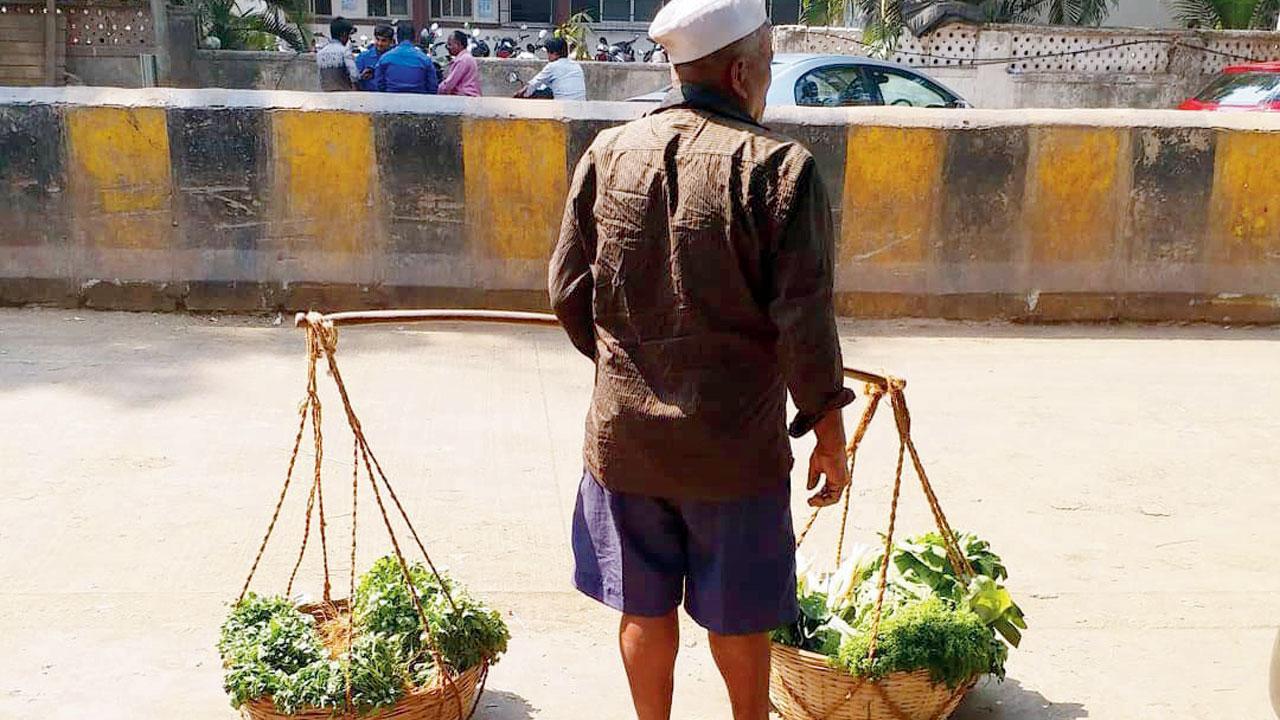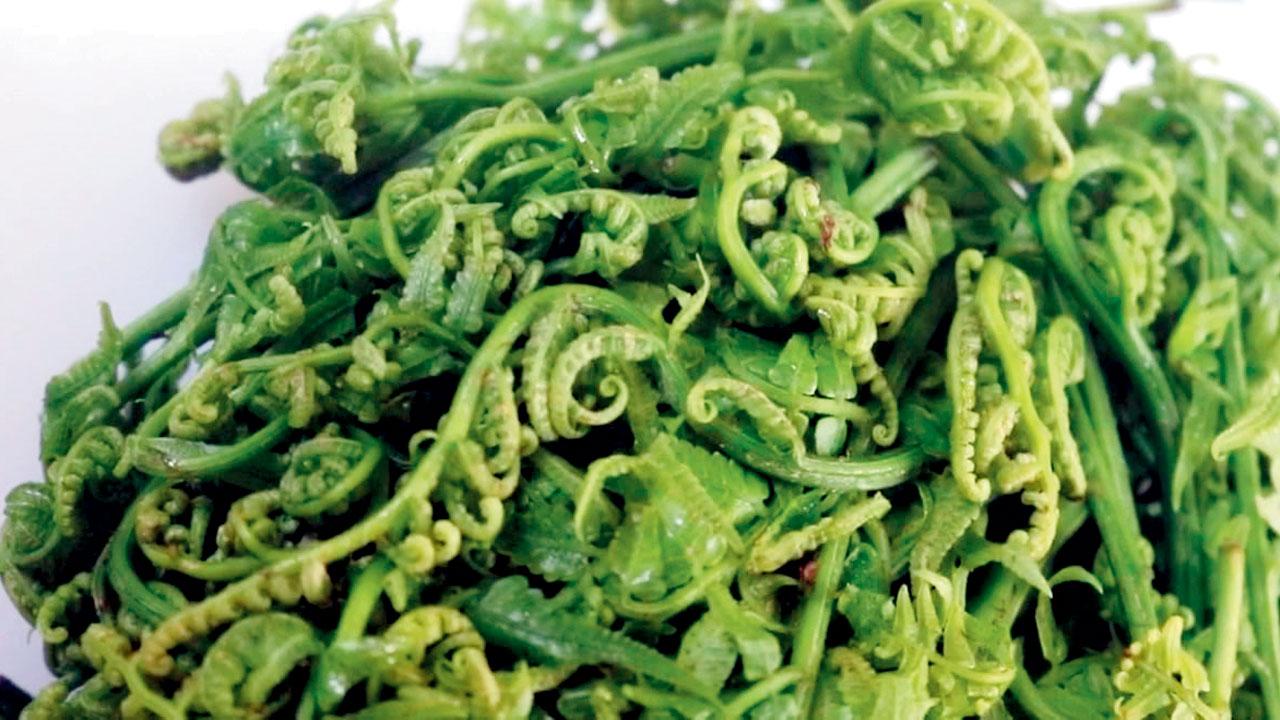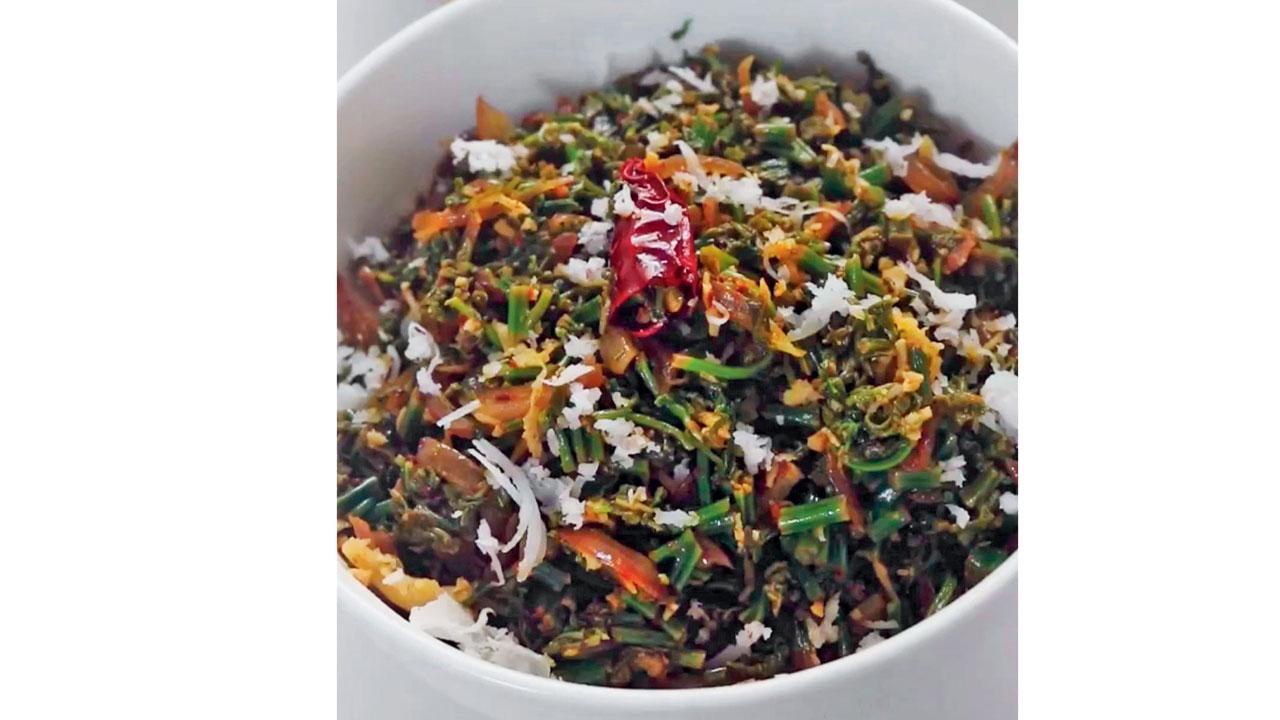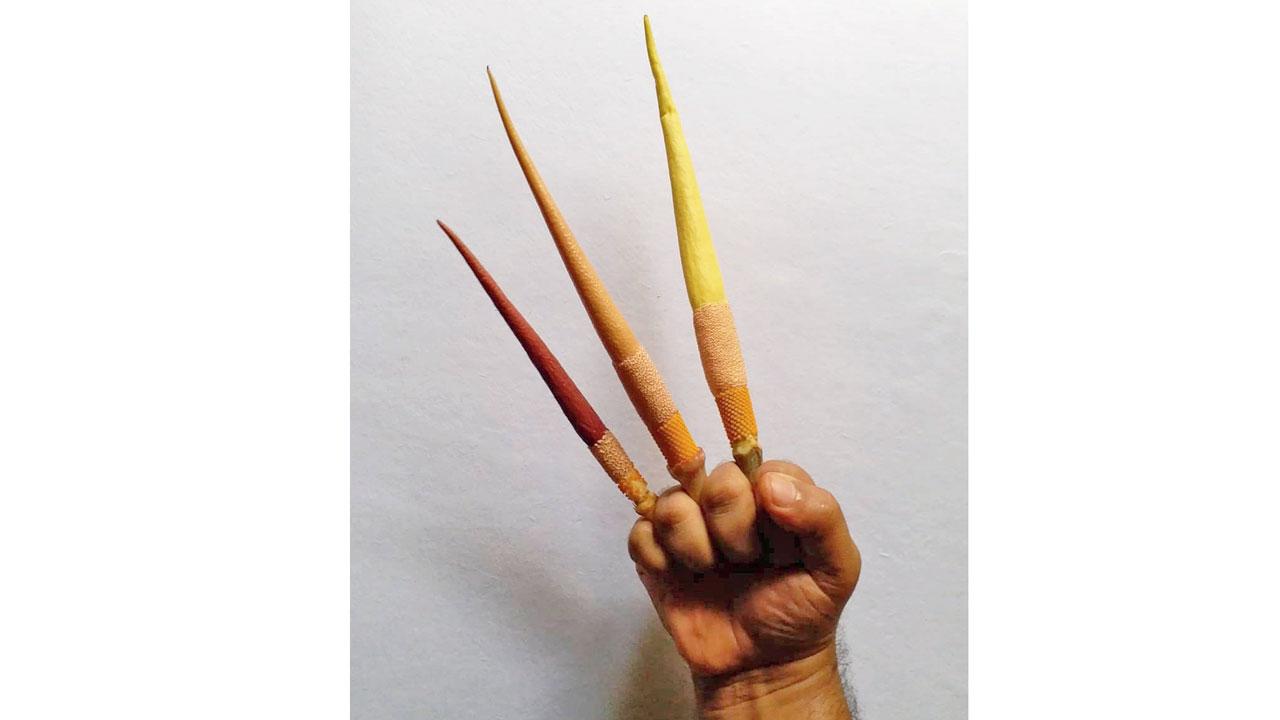Head to the local market for foraged wild seasonal vegetables and make a mean dinner with ingredients from the forests

Villagers who forage seasonal greens and bring them to cities are a rare sight and chef Swapneel Prabhu has fond memories of spotting these vendors selling vegetables on shoulder baskets in Vasai. Occasionally, you will find these at the local mandai (market) in Dadar, Byculla, Andheri, Vashi and Thane.
While visiting Dadar’s vegetable market many monsoons ago, Keertida Phadke noticed a grass-like vegetable that looked like spring onions but wasn’t. Curious, she asked the vendor and learned about phodshichi bhaji or ran bhaji, a wild green found in the hilly areas of Maharashtra only during monsoons. Known as safed mulsi, mushli, karli, kuli, or peva, it is also referred to as devkrupa bhaji (a vegetable of god’s blessing) because it is wild and not cultivated. It holds a significant place in culture and traditions, adding a unique charm to its culinary uses.

Wild seasonal vegetables like takla, kurdu, and varieties of alu come to the city markets from Maharashtra’s Palghar district and are foraged by Kokni and Warli adivasi communities. These greens have been popping up at weekly farmers’ markets in hip urban areas. “I did not grow up eating phodshi, but now I see vendors in the Bandra farmers’ market selling it,” says Phadke. “It’s a hyper-local and hyper-seasonal green, healthier to eat at the right time.” These wild seasonal vegetables are not just delicious, but also packed with health benefits, making them a must-have in your diet. A trained chef from the National Gourmet Institute, New York, Phadke always asks the vendors how to clean, cut, and cook these vegetables, as their knowledge is passed down through generations.

Fiddlehead Fern
Phodshichi bhaji, with its herbaceous flavour, can be eaten from tip to root, however, its white roots, used in alternative medicines, should be trimmed before cooking. “By itself, phodshichi bhaji doesn’t have much taste, so it needs strong-tasting vegetables like onion or garlic to balance it. You can cook it as a sabzi, make a pakora, add it to dal and thalipeeth, or make a stir-fry,” she adds. In the Konkan, it is even added to dried fish.
Chef Swapneel Prabhu was introduced to keerl (bamboo shoot), amongst other produce, very early in childhood. “Seasonal produce was celebrated and invariably made it to our plates in the form of traditional delicacies,” he says. “Nobody at home turned their nose up at them. The excitement on such days would be palpable. We were encouraged to try new foods. Never forced! Once we tasted a particular ingredient or flavour, the choice to like or reject it was left to us. This was done nonchalantly—without any pontification and it happened organically. We imbibed the curiosity through osmosis. As far back as I can stretch my memory, I can’t recall a single year where we haven’t had keerl. Aammaa made it a point to cook it multiple times every season. Even if that meant getting down at Dadar or Vile Parle, to shop for it on her way home from work. Imagine boarding a Virar local during peak hours with a bag of bamboo shoots sticking out.”

Swapneel Prabhu, Divya Uthaiah and Keertida Phadke
Prabhu considers himself fortunate and grateful that his mother considered it essential and went out of her way to work around the limitations and extreme challenges of urban living, just to instil appreciation for ingredients, especially seemingly outlandish ones. “It laid the foundation for our love affair with flavours, in which Aammaa played the pivotal catalytic role of Cupid,” he says. Mumbai’s indigenous Warli tribe consumes bamboo shoots as a pickle or stir fry, while Coorgi cuisine uses them in curries. “The flavour is earthy with a crunch, even when cooked,” says Divya Uthaiah, a digital creator promoting Kodava recipes.
Similarly, fiddlehead ferns, a bright green frond from a spiral stem, are a delicacy in Coorg. “They grow on the riverbanks around monsoon in my hometown and are seen in markets for only a few weeks,” Uthaiah says. The most common recipe is therme thoppy palya (fiddlehead fern fry). They are foraged in the West, too, and in India, they grow in damp areas of the Himalayan states in the North and Northeast to hilly parts of Karnataka. They are cooked mainly through stir-frying, which brings out their flavour, similar to asparagus, green beans, or spinach.
With the monsoon’s arrival, these intriguing dragons emerge from underground yams (shevla). Prabhu describes, “The fibrous stalk reveals bright saffron pollen, an intricate pattern, and a hollow, spongy tip in colours from pale yellow to deep magenta. The basal part causes severe itching and should be discarded. Use latex gloves if you have sensitive skin. The edible tips are spongy like mushrooms with a distinct umami flavour and mildly astringent notes. Raw stalks are toxic but, combined with the sour berry kakad, create a medicinal, meaty-textured curry.”
Phodshichi paniyaram

Ingredients
1 cup phodshi leaves, chopped
1/2 cup moong dal
2-3 green chillies
1/2 inch piece of ginger
3 cloves of garlic
1/4 tsp turmeric powder
1 small onion, chopped
1.5 tbsp rice flour
Salt to taste

Method
Soak the moong dal for three to four hours, strain, and grind with green chillies, ginger, and garlic. Avoid using water while grinding. Mix in the remaining ingredients. Cook in a greased paniyaram pan or fry as pakoras. Serve with green chutney.
How to clean it: Cut the white bottom and remove the vein at its centre. Wash like you would any greens.
Where to find it: Dadar vegetable market, Bandra farmers’ market, Byculla market.
Therme thoppu palya

Ingredients
1 bunch fiddlehead fern, washed and chopped
1.5 tbsp oil
1 tbsp ghee
1/2 tsp mustard seeds
2 dry red chillies
2 green chillies, chopped
1 onion, chopped
1/2 tsp chilli powder
1/4 tsp turmeric powder
2 tsp lime juice
1 tbsp grated coconut
Salt to taste
Method
Heat the oil and ghee in a pan. Add mustard seeds and let them splutter. Add dry red and green chillies, chopped onion, chilli powder, turmeric powder, and chopped fiddlehead ferns. Mix well. Season and cook covered for three to five minutes until the stalks are tender. Add lime juice and grated coconut, mix, and turn off the heat. Serve hot with akki rotti.
How to clean it: Wash it several times and remove the brown husk completely. Alternatively, soak it in cold water for five minutes to remove the husk and then rinse before cooking.
Where to find it: Four bungalows market, Andheri
Baimbale barthad

Ingredients
1 large bowl of cooked bamboo shoots
1.5 tbsp oil
1/2 tsp mustard seeds
8-10 garlic cloves, crushed
3-4 dry red chillies
Curry leaves
1 onion, chopped
1/2 tsp chilli powder
1/4 tsp turmeric powder
Salt to taste
2 tsp coriander powder
1/2 tsp lime juice

Method
Heat oil in a kadai, add mustard seeds, crushed garlic, dry red chillies, curry leaves, and chopped onion when it sputters. Add cooked bamboo shoots and mix thoroughly. Cook until dry, and add chilli powder, turmeric powder, coriander powder, and salt. Mix well. Cover with a lid and cook for five to 10 minutes. Finish with lime juice, and serve with akki rotti and a dollop of ghee.
How to clean it: Break it from the root and soak in water for up to 12 hours. Then change the water and soak for another 12 hours. Add salt and turmeric to the water; some even use soda bicarbonate.
Where to find it: Dadar, Thane and Four bungalows market, Andheri
 Subscribe today by clicking the link and stay updated with the latest news!" Click here!
Subscribe today by clicking the link and stay updated with the latest news!" Click here!










